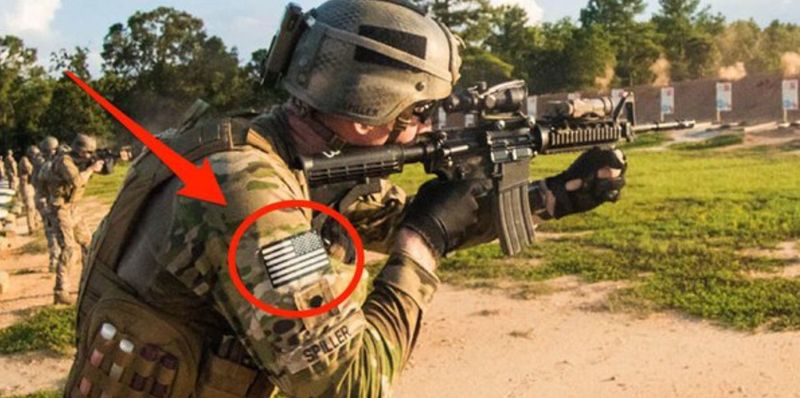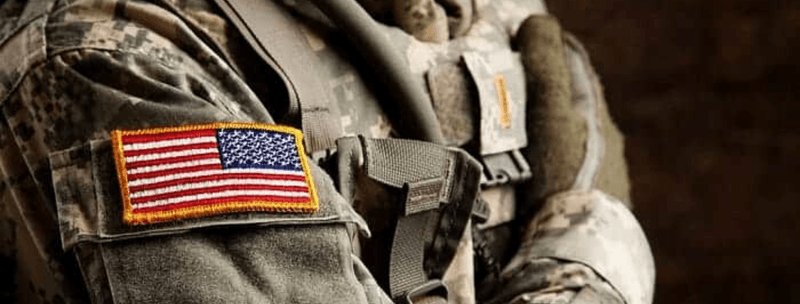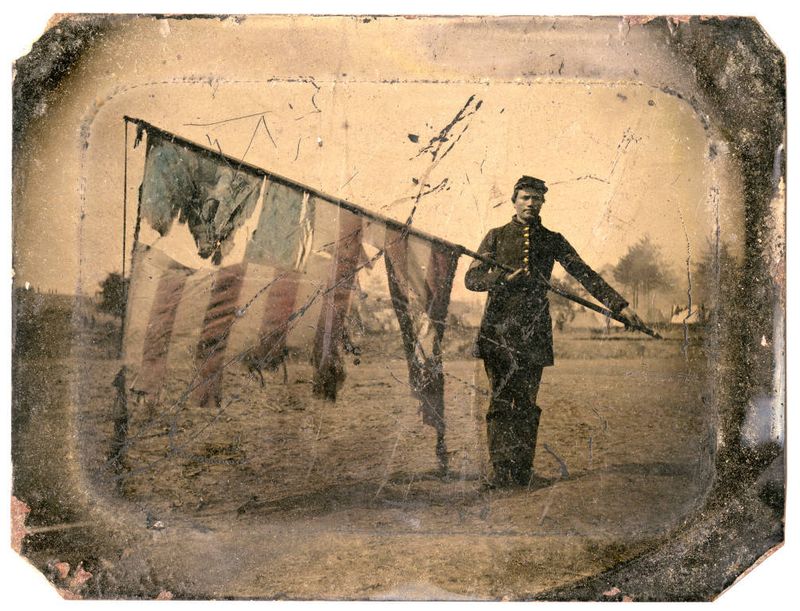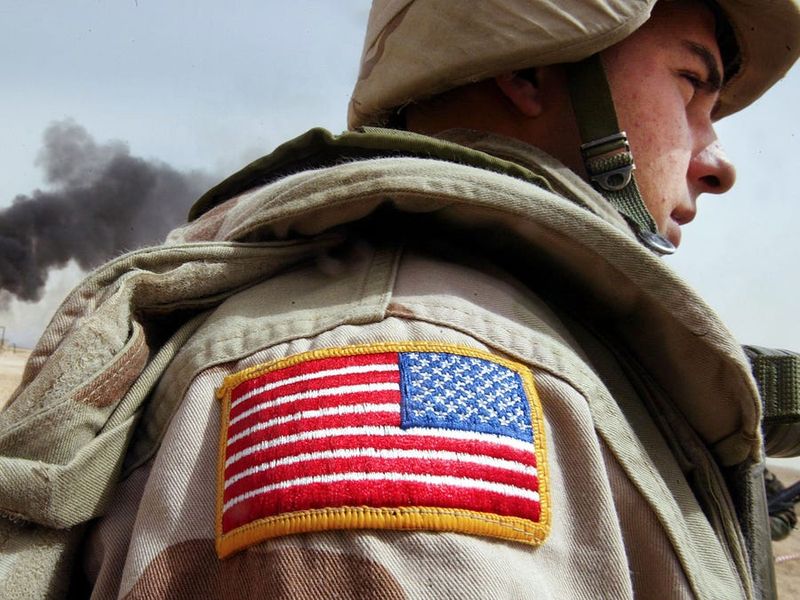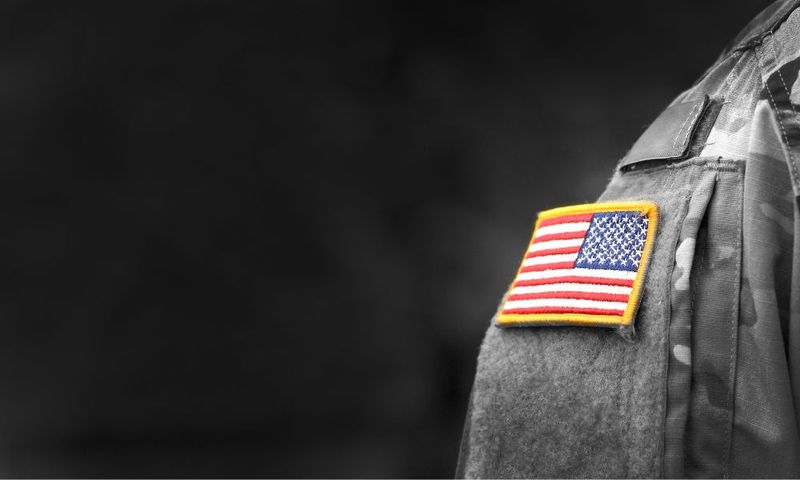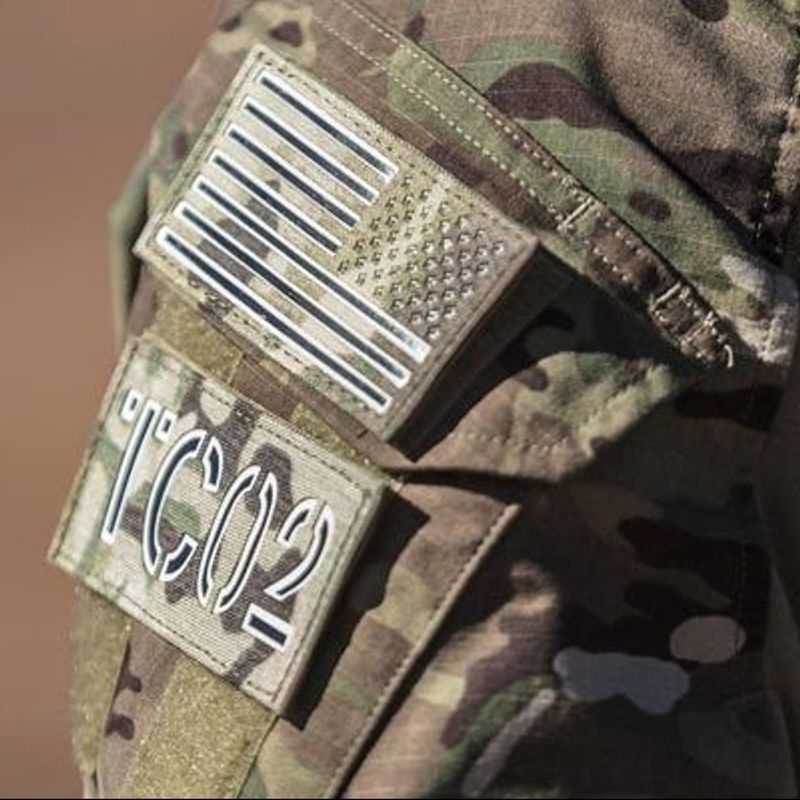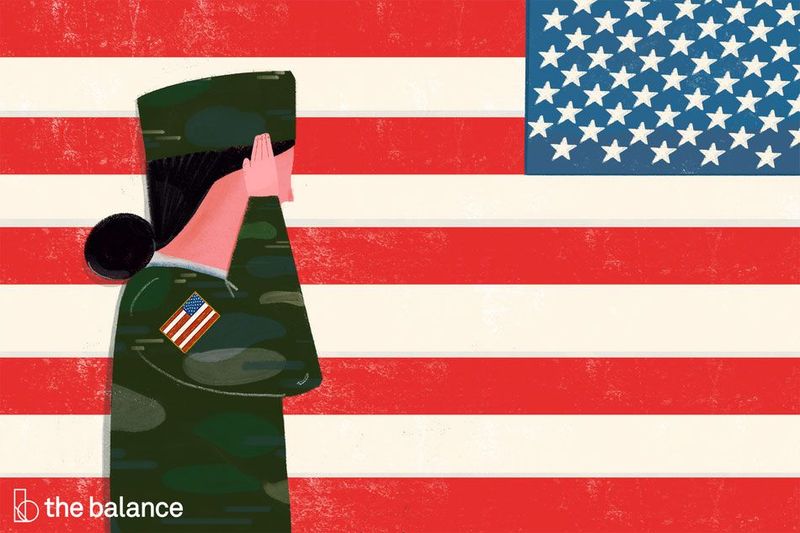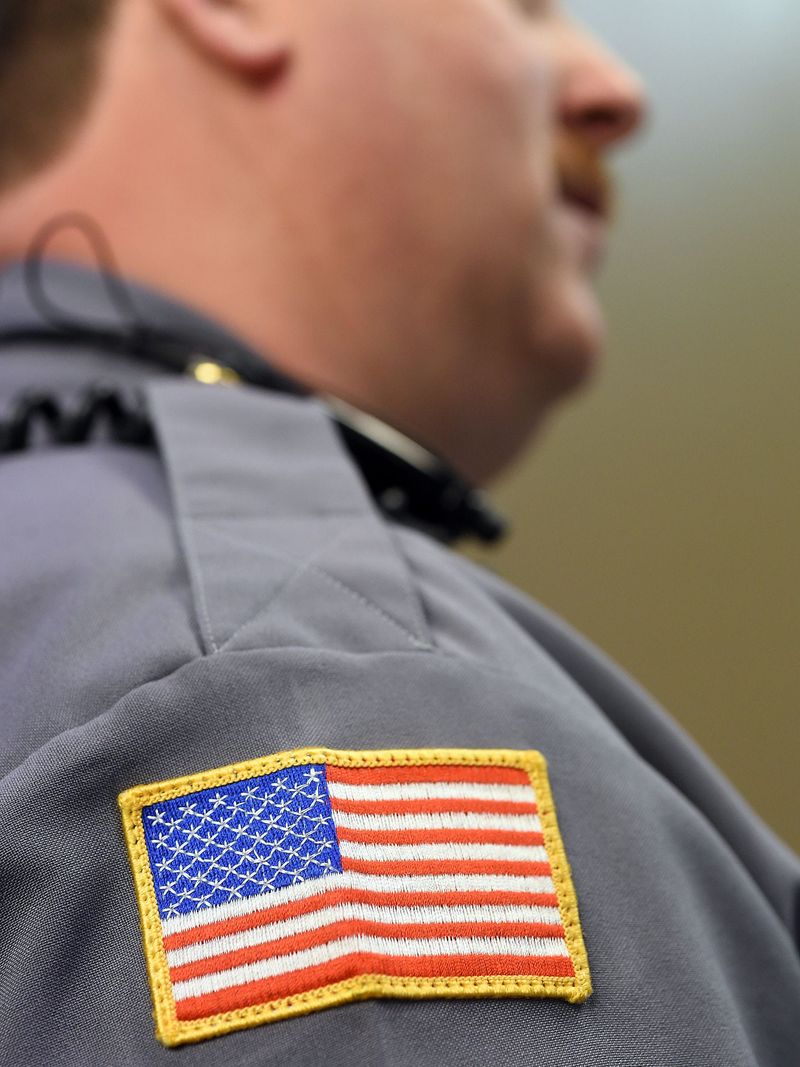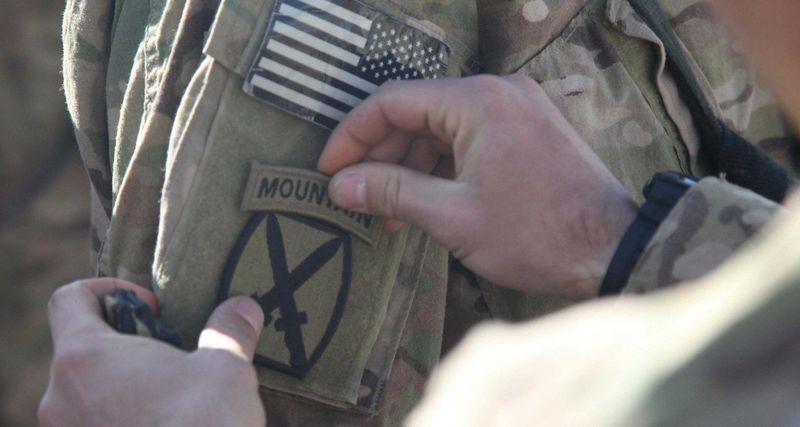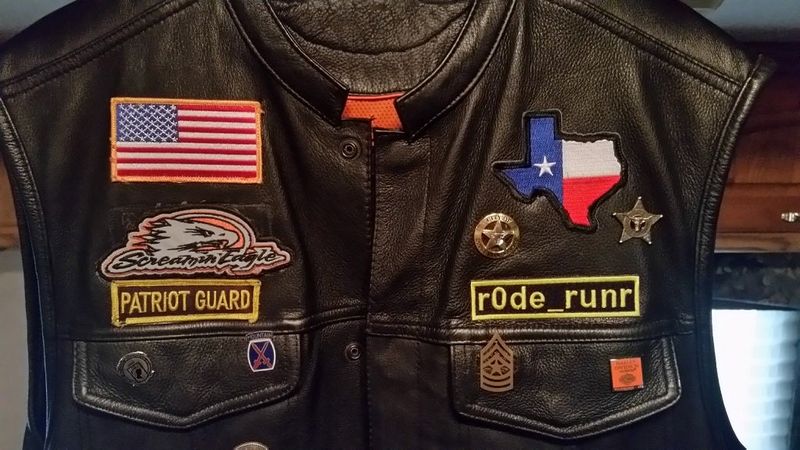Have you ever wondered why American soldiers wear flags that seem backwards on their uniforms? This isn’t a manufacturing mistake or optical illusion.
The reversed flag on military uniforms tells a fascinating story about tradition, symbolism, and military pride that dates back generations.
Let’s explore the surprising details behind this intentional design element that most civilians completely miss.
1. It’s Not Backwards — It’s “Assaulting Forward”
Military flags follow a principle of movement and momentum. When soldiers charge into battle, imagine a physical flag flying behind them—the stars would lead the charge while the stripes would trail behind.
This visual representation shows troops moving toward their objective, never retreating. The flag appears reversed because it mimics how a real flag would look if attached to a charging soldier’s uniform.
During America’s early conflicts, standard-bearers carried actual flags into battle this way. Modern uniform designers preserved this powerful symbol of forward progress and determination.
2. The Union (Stars) Always Leads the Way
Stars on the American flag represent something special—unity among the states. Military protocol dictates that this symbolic union must always face forward, leading the charge into any situation.
Think of the blue field with stars as the flag’s “honor point.” When a soldier moves forward, the stars advance first, representing America’s united strength pressing onward. The 50 stars lead because they symbolize the nation’s collective resolve.
Historical military customs view the union as sacred. Positioning it at the front honors centuries of tradition while visually reinforcing the idea that American unity spearheads every mission.
3. It Honors Historic Flag-Carrying in War
During America’s bloodiest conflicts, designated flag bearers had the dangerous but honorable duty of carrying the national colors into battle. As these brave soldiers rushed forward, wind naturally pushed the flag back, creating the visual effect we now replicate on uniforms.
Many flag bearers became targets specifically because they carried this powerful symbol. The reversed patch pays tribute to their sacrifice.
Civil War photographs show this phenomenon clearly—flags streaming backward as troops advanced. Modern soldiers carry this legacy on their shoulders, connecting today’s military with generations of warriors who fought beneath the same stars and stripes.
4. Only the Right Shoulder Shows the Reverse Flag
Sharp-eyed observers might notice something peculiar—the reversed flag appears exclusively on the right arm of military uniforms. This placement isn’t random but carefully calculated for visual consistency.
When soldiers march in formation or move forward, their right side leads slightly due to natural body mechanics. The right shoulder typically advances first, making it the perfect position for the forward-facing stars.
Left shoulder patches, when used, show the traditional flag orientation. This asymmetrical approach ensures the flag always appears to wave correctly regardless of which side you view the soldier from—a detail that demonstrates the military’s attention to symbolic precision.
5. The Flag Is a Symbol of Progress, Not Retreat
Military psychology incorporates visual symbolism that subtly reinforces core values. A standard flag orientation on the right shoulder would make the stars trail behind—creating an unconscious impression of backing away from challenges.
Soldiers train to advance toward danger, not away from it. The reversed flag visually reinforces this mindset every time they put on their uniform or catch their reflection.
Combat veterans often speak about the psychological impact of seeing their unit moving forward under the flag. The reversed design transforms a simple patch into a constant reminder of the military’s forward-thinking mission and never-retreat mentality.
6. It’s a Federal Regulation
Military uniforms follow strict guidelines outlined in Army Regulation 670-1. This comprehensive document specifies everything from boot polish to button placement—including precise instructions for flag patches.
The regulation states: “The full-color U.S. flag cloth replica is worn so that the star field faces forward, or to the flag’s own right.” This wording leaves no room for personal preference or unit variation.
Beyond military rules, the U.S. Flag Code (Public Law 94-344) provides guidance for proper flag display. While civilians might consider the reversed flag unusual, it actually demonstrates the military’s careful adherence to federal standards for respectful flag presentation.
7. It’s Used by Other Branches, Too
Army soldiers aren’t the only ones sporting this distinctive look. Navy SEALs, Air Force tactical units, and Marines in certain deployments all wear the reversed flag patch, creating visual unity across America’s fighting forces.
Space Force, America’s newest military branch, incorporated this tradition from its beginning. Even Coast Guard personnel adopt the reversed flag when operating alongside other military branches in joint operations.
Law enforcement tactical teams have adopted this military convention too. FBI, SWAT, and Border Patrol units often display the reversed flag on their operational gear—a visual reminder of their connection to military tactics and traditions.
8. It’s Often Attached with Velcro
Modern combat uniforms feature practical innovations alongside traditional symbolism. Most flag patches connect to uniforms via hook-and-loop fasteners (commonly called Velcro), allowing for quick changes based on mission requirements.
During desert operations, soldiers might swap standard colorful flags for subdued tan versions. Night missions might call for infrared-reflective patches visible only through night vision equipment.
This removable design serves another purpose—allowing soldiers to remove identifying national symbols when operating in sensitive areas. The Velcro attachment represents the perfect marriage between unchanging tradition (the reversed orientation) and practical flexibility needed for modern warfare.
9. It’s a Quiet Lesson in Military History
Few civilian observers realize they’re looking at a history lesson when they notice the reversed flag. The tradition connects directly to battlefield practices from the American Revolution through the Civil War, when flag bearers physically carried standards into combat.
During the Battle of Gettysburg, 320 men died carrying the flag for the Union army. Their sacrifice created the visual image—flags streaming backward during forward charge—that inspired today’s uniform design.
Military museums often display historic photographs showing this phenomenon alongside modern uniforms. The reversed patch serves as a subtle educational tool, preserving knowledge of battlefield traditions that might otherwise fade from public awareness.
10. It’s One of the Most Asked-About Uniform Details
Military recruiters report that the reversed flag generates more questions from curious civilians than almost any other uniform element. This seemingly backward detail creates natural opportunities for service members to explain military traditions to the public.
Veterans take particular pride in explaining the symbolism. Many former soldiers mention flag orientation conversations as positive interactions that help bridge the civilian-military divide.
The flag’s unusual appearance serves as an unintentional conversation starter. When someone asks, “Why is your flag backward?” they open the door to learning about military values, history, and symbolism—making this small patch a powerful tool for public understanding.
11. The Flag Implies Constant Forward Motion
Psychology studies suggest that visual cues can reinforce behavioral expectations. The reversed flag creates a perpetual sense of forward momentum, even when a soldier stands perfectly still.
Military trainers leverage this visual reinforcement during basic training. The flag’s orientation subtly communicates that soldiers are always moving toward objectives, never retreating—a psychological anchor during difficult missions.
Former drill sergeants often mention pointing to the flag during motivation talks. “Your flag is always moving forward, and so should you” becomes a powerful metaphor that stays with service members throughout their careers and beyond.
12. It Sets the U.S. Military Apart Symbolically
International military forces typically display their national flags in the standard orientation on uniforms. America’s reversed flag approach creates an instantly recognizable distinction that visually separates U.S. troops from other nations’ forces.
During multinational operations, this subtle difference becomes a quick identification marker. NATO exercises demonstrate this clearly—American soldiers stand out among allied forces through this unique detail.
Military historians note that this distinctive approach reflects America’s broader military philosophy. While other nations’ military traditions often emphasize defensive postures, the forward-facing stars visually reinforce the U.S. military’s traditionally proactive stance in global operations.
13. It Lives On Long After Service
Walk through any veterans’ gathering and you’ll spot numerous reversed flags on jackets, hats, and vests. This distinctive symbol follows service members into civilian life, becoming part of their permanent identity.
Veteran-owned businesses often incorporate the reversed flag into logos and branding. The orientation instantly communicates military connection without requiring words or explanation.
For many former service members, the reversed flag represents more than past service—it symbolizes continuing to move forward through life’s challenges. This enduring connection explains why many veterans become visibly upset when they see incorrectly oriented flag patches on civilian clothing or commercial products.

